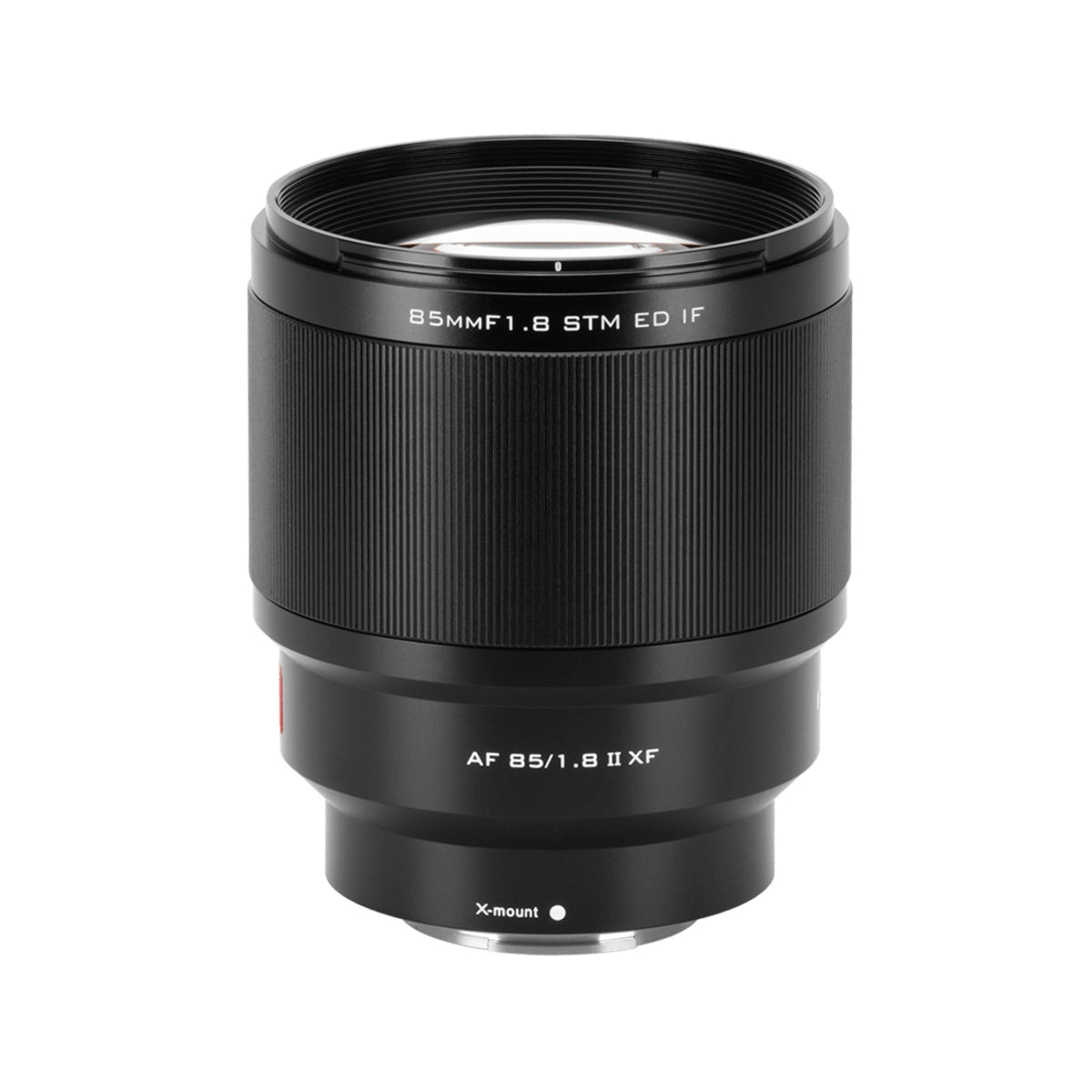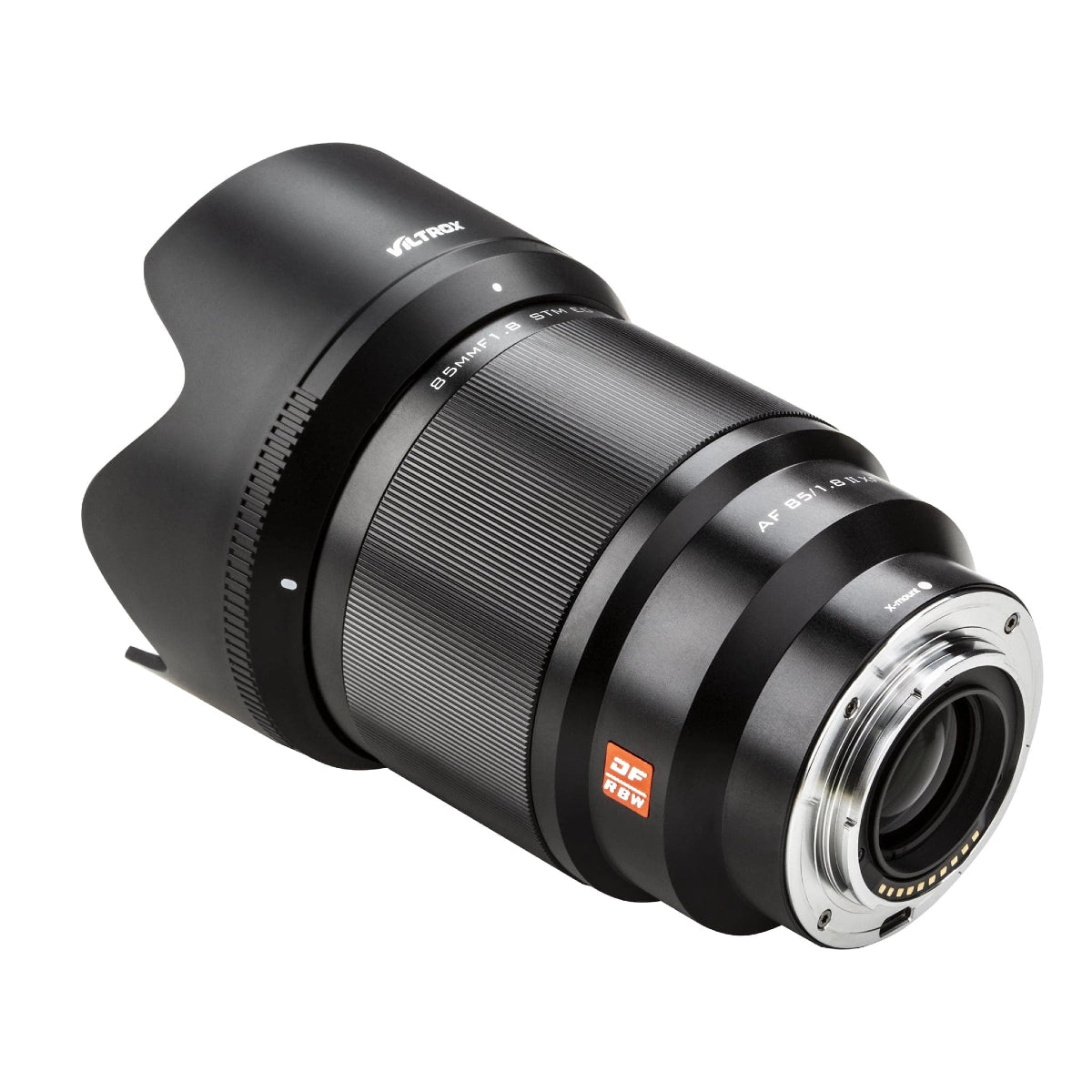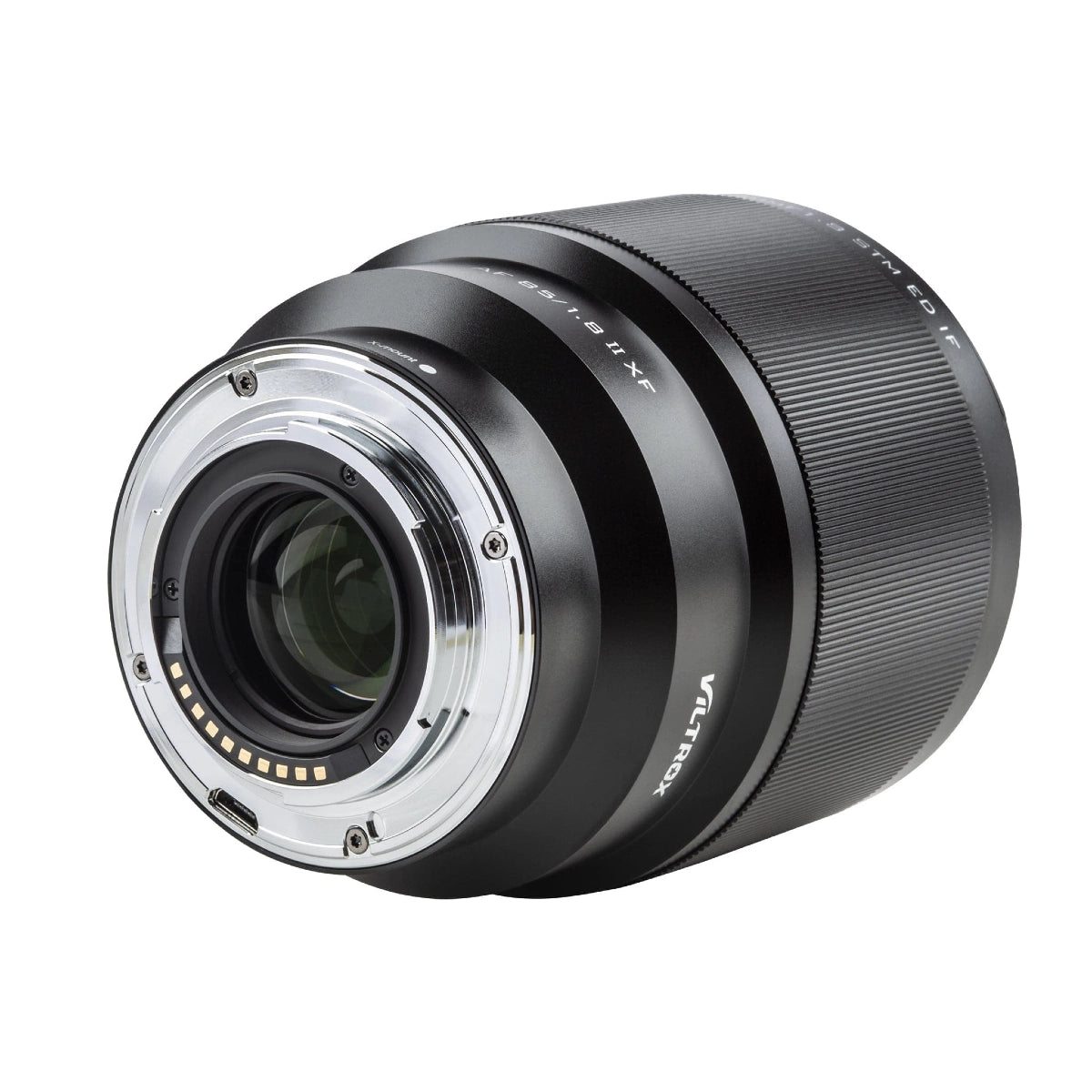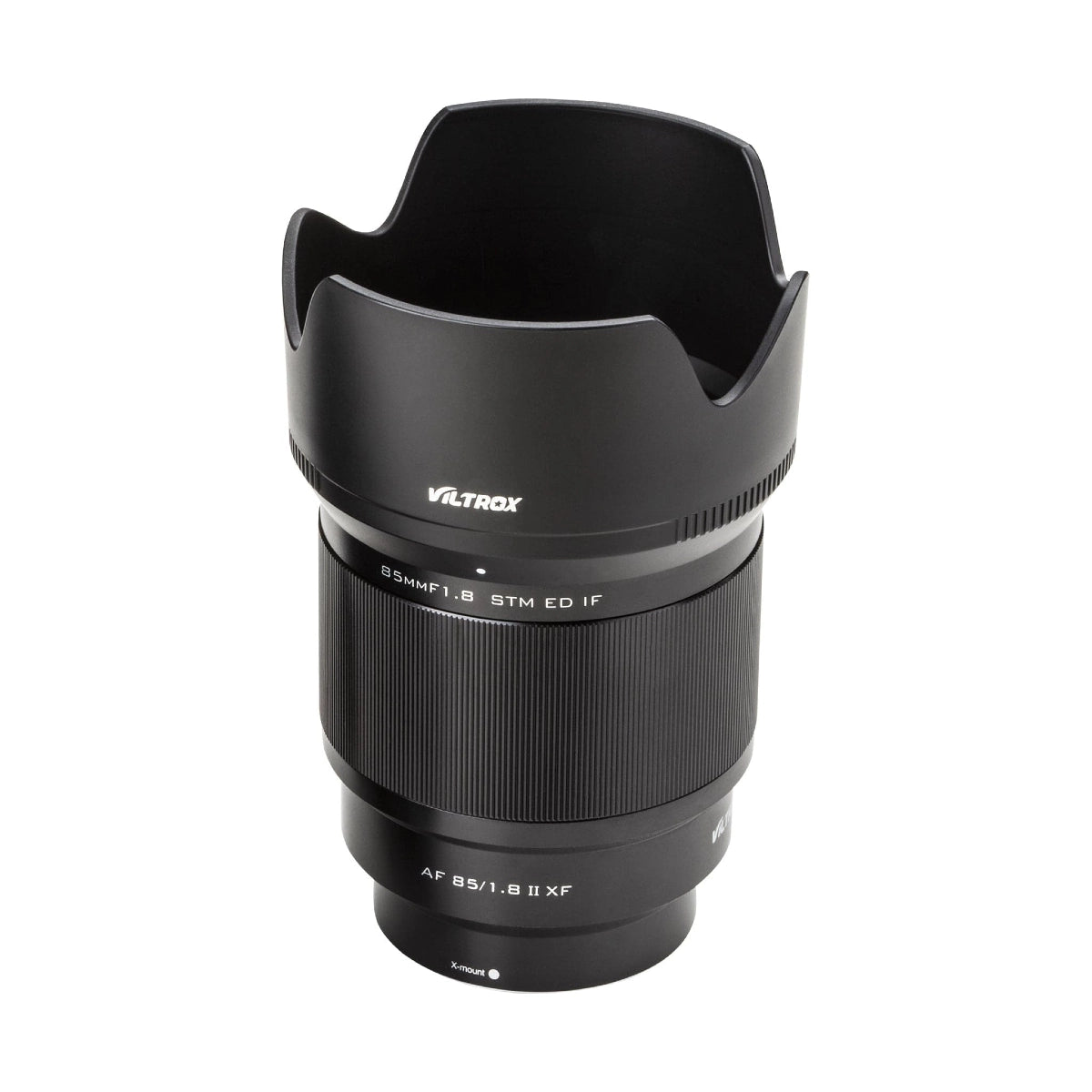Product Description
Viltrox AF 85mm f/1.8 XF II Lens - Fujifilm X-Mount
Unlock Your Creativity with the Ultimate Portrait Lens
The Viltrox AF 85mm f/1.8 XF II lens is a game-changer for FUJIFILM X-mount mirrorless camera users, offering a combination of precision optics, cutting-edge features, and an elegant design. Perfect for portrait photographers and creative enthusiasts, this second-generation lens delivers stunning results with unmatched convenience and versatility.

Key Features:
- Aperture Range: f/1.8 to f/16 for exceptional control over exposure and depth of field.
-
Optics Built for Perfection:
- One Extra-Low Dispersion element for minimised chromatic aberration.
- One Aspherical Element for improved clarity and reduced distortion.
- Four High-Transparency Glass Elements for superior sharpness and vibrant colours.
- HD Nano Multi-Layer Coating: Suppresses flare and ghosting, enhances contrast, and includes water resistance for outdoor reliability.
- STM Stepping Autofocus Motor: Silent, precise, and ideal for both stills and video.
- Rounded 9-Blade Diaphragm: Produces beautiful, creamy bokeh for professional-quality backgrounds.
- Electronic Contacts & Camera Integration: Seamlessly communicate Exif data and enable aperture selection from the camera body.
- USB Firmware Updates: Stay ahead with easy compatibility improvements.

Why Choose the Viltrox AF 85mm f/1.8 XF II?
A Lens Designed for Professionals
Engineered for FUJIFILM X-mount APS-C cameras, the 85mm lens provides an equivalent focal length of 127.5mm, perfect for portraiture, lifestyle, and event photography. With its bright f/1.8 aperture, you'll have excellent control over subject isolation and depth of field, even in low-light environments.
Next-Level Optical Performance
The advanced optical construction reduces chromatic and spherical aberrations while delivering breathtaking clarity. Thanks to its Nano HD Multi-Coating, this lens excels in high-contrast environments, offering vivid colours and minimal flare even in harsh lighting.
Portability Meets Sophistication
The Mark II design is lighter, more compact, and optimised for portability without compromising performance. Whether you're shooting in a studio or on location, this lens is a reliable companion for all-day use.
Versatility in Focus
With a minimum focusing distance of just 2.6 feet, this lens allows you to capture intimate details with ease. The STM autofocus motor ensures your shots are crisp, whether you're focusing on fast-moving subjects or creating cinematic videos.
Ideal for Portrait Photographers
If you're passionate about creating stunning portraits, the Viltrox AF 85mm f/1.8 XF II is your go-to lens. Its combination of a wide aperture and superior optics ensures flattering results that make your subject pop, while the 9-blade diaphragm adds an artistic touch to your background blur.

Built for Modern Photography
- Weather-Ready Coating: Water-resistant surfaces make this lens reliable in unpredictable weather.
- Seamless Integration: Electronic contacts ensure smooth communication with your FUJIFILM camera for a hassle-free experience.
- Upgradeable Firmware: Easily enhance the lens’s performance via the integrated USB port.

What’s in the Box?
- Viltrox AF 85mm f/1.8 XF II Lens
- Dedicated Lens Hood
- Lens Pouch
- User Manual
Take Your Photography to New Heights
With its sleek design, robust performance, and exceptional optical quality, the Viltrox AF 85mm f/1.8 XF II is the ideal choice for photographers who demand versatility and quality. Whether you're capturing portraits, street scenes, or creative compositions, this lens will bring your vision to life.

Order Yours Today!
Experience the difference of professional-quality optics and innovation. Don't miss out on the chance to elevate your photography with the Viltrox AF 85mm f/1.8 XF II.
Payment & Security
Your payment information is processed securely. We do not store credit card details nor have access to your credit card information.






















